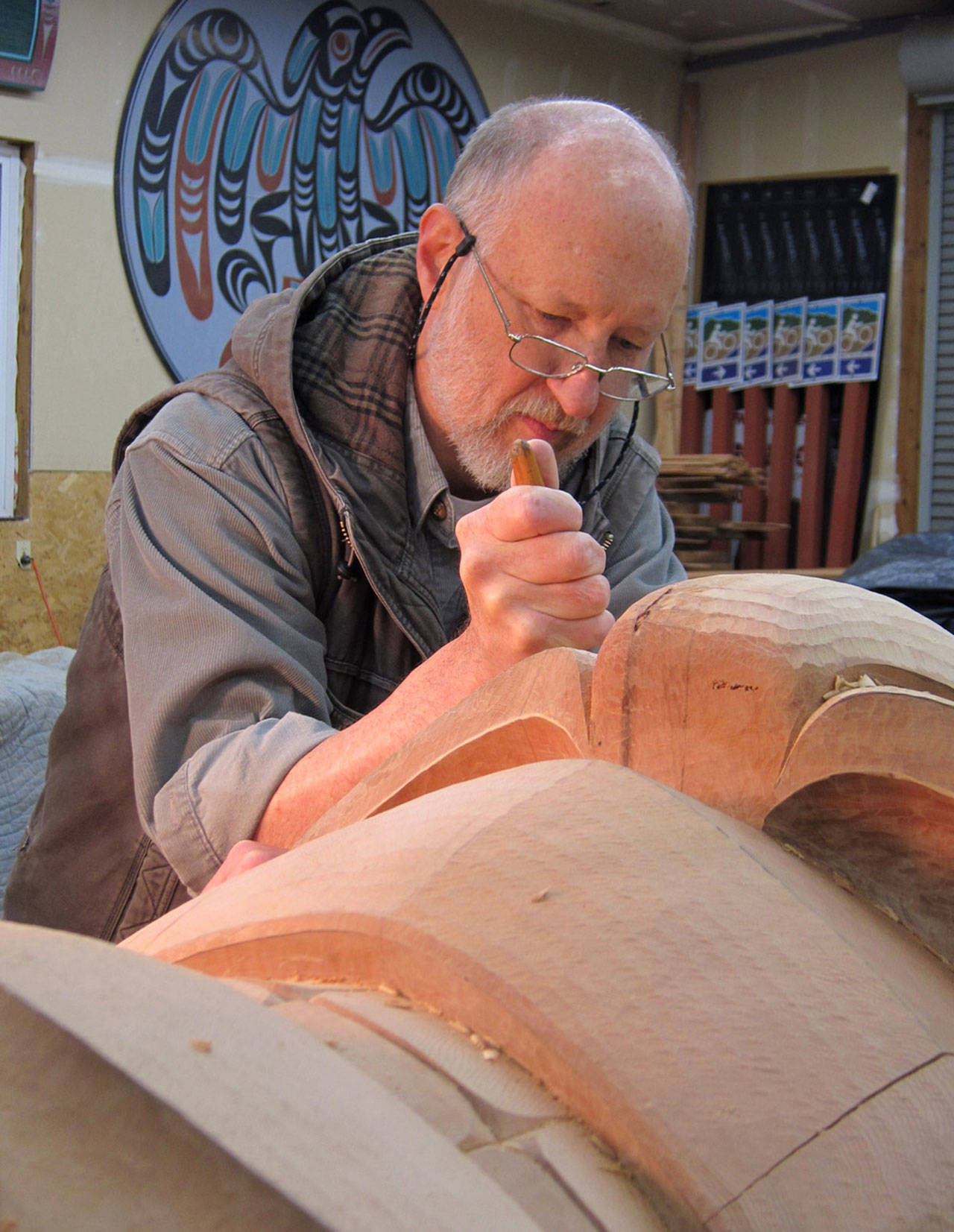PORT TOWNSEND — The Northwest Maritime Center will be gifted two pieces of Native American art by the Jamestown S’Klallam Tribe, designed and carved for the center by artist Dale Faulstich.
The pieces, a totem pole and a Nootka-style canoe, tell the Native story of the area’s waters and celebrate the people who carved the canoes.
The Jamestown S’Klallam tribe is donating the 27-foot-tall totem and a scaled-down version of the canoe to be displayed at the center.
The totem will be placed in front of the Wooden Boat Chandlery on Water Street as a welcome to visitors.
The canoe will be mounted between two of the buildings along with an interpretive panel.
The work will be installed sometime in 2019.
“I’m pretty off the charts excited about this,” said Jake Beattie, Northwest Maritime Center executive director.
“This area has such a rich Native history. It’s an honor to be asked to help steward and communicate that in such a significant way.
“For the Maritime Center, it’s the opportunity to start engaging people in the full maritime culture of our region.
“It has always been a maritime one, and for the thousands of years before the Europeans showed up, that maritime heritage was comprised exclusively of canoes.”
Faulstich said that the wood for the totem is from an old growth Western red cedar, about 900 years old, taken from the Olympic Peninsula.
“Port Townsend is well known for finely crafted wooden boats and for the artisans who build them,” said Faulstich.
“The totem pays homage to them both. The wooden boat building tradition began in this area long before white settlers arrived. The S’Klallam people carved canoes from cedar logs that well-served travelers, traders, fishermen, whalers and warriors.”
Faulstich said to honor all the craftsmen of Port Townsend, the top figure on the totem is the Supernatural Carpenter.
“He was sent to Earth to implement the wishes of Senx [the sun], ruler of the Land Above,” he explained.
“Below the carpenter is the Spirit of the Cedar Tree. Western red cedar was called the ‘Tree of Life.’ The working properties of the cedar make it a choice wood for boat building. The cedars provided for shelter, clothing, tools and transportation.”
The bottom figure represents T’Chit-a-ma-hum, or Chetzemoka, a high-ranking S’Klallam chief.
“He was known as a peacemaker and friend to the early settlers,” he said.
Faulstich’s design depicts Chetzemoka with his raised hands in a traditional gesture, a welcome to visitors in Port Townsend.
The small figure at the bottom of the pole represents Sentinel Rock, the place from where Chetzemoka signaled to the settlers that they were safe and would not be driven out of the area.
Faulstich said the Nootka-style canoe, also known as the Chinook canoe, had wide use among the tribes of the Northwest Coast.
“These graceful vessels were vital to the lifeways of the region, as natural resource and food gathering were often only accessible by canoe,” he said.
“Eventually, the use of this style canoe spread over a large area, from the Columbia River all along the coast of Washington state and Vancouver Island, throughout the Strait of Juan de Fuca, Puget Sound and the Strait of Georgia.”
Faulstich will begin carving the pieces in September at the Jamestown S’Klallam Tribal Center campus in Blyn.
________
Jefferson County Editor/Reporter Jeannie McMacken can be reached at 360-385-2335 or at jmcmacken@peninsuladailynews.com.

